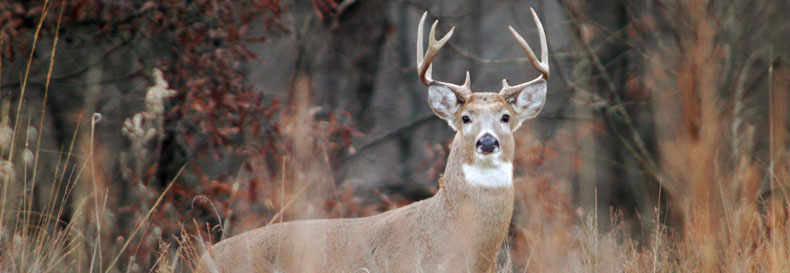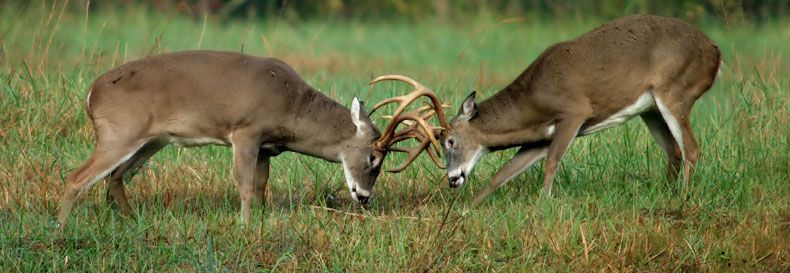
John Phillips | September 17, 2012
Locating the Deer You Want to Hunt:
Most of our finding deer to hunt is through observed movement. My brother Mark and I spend countless hours just watching areas with deer feeding in fields in the evening. Sometimes those fields are full of agricultural crops, but early in the year, we may watch a green field source. During a dry year, deer may be coming to a clover field or perhaps a winter wheat field you've planted as a food plot. We use the Mossy Oak BioLogic system of plantings on all our farms. We watch our fields containing clover plots starting in August for deer. During one part of August, deer start being extremely visible – particularly racked bucks – because the deer are in the last stage of finishing their antlers. That means that bucks have to go out and get the nutrients to put that final growth on their antlers. Last year, we filmed probably eight or nine shooter bucks in velvet on our property. During the season, we may have seen only half of those. So, just because you see a shooter buck doesn't mean you can return to that same spot and see him again. But at least you know that shooter buck is there, and that gives you the drive to go back out and hunt him.
Finding the Specific Area to Take a Buck:
Our goal is to observe deer movement. Mark and I will intentionally sit a considerable distance away from a productive-looking area to watch deer. We like to watch a field for two to five afternoons and move-in on that final afternoon we have to hunt rather than finding sign on foot and moving in and hunting that sign. We will spend 2 or 3 of our 5 days we have to hunt actually searching for a buck to bag. We know that once we spook a deer, we're done, period. That's what we've experienced, especially early in the season when the deer are in a pattern. You've got to be super-stealthy and super-cautious not to spook the buck. Then during the rut, we move into those best deer-hunting spots. Observed movement isn't just a 3-, a 4- or a 5-day investment. We still have some stands that we're tweaking, and we've been hunting some of them for 5 to 8 years.
We may continue to move 10 yards one way, change our access slightly or switch the wind direction with which we'll hunt an area. We’re convinced that the more you hunt a particular piece of property, the more intimate you become with it, and the better hunter you become while on it. We advise people not to hunt more land but instead to hunt less land more intensely and intelligently. You need a lot of strategy to hunt a region in a low-impact manner. I can't emphasize that statement enough. The biggest mistake guys make is to barge into an area. Although we've grown-up hunting that way, I think it's the worst mistake a guy can make, because the deer just won't tolerate human intrusion. So, we spend more time looking for the deer we're trying to take than actually hunting them. You may say that looking (observation) versus hunting, timewise, is probably 8 or 10 in our hunt game plan."
Once we move-in, we carefully refine our strategies and get the exact right tree. After identifying the very best tree to place a stand, we’ll look for the dates when they've had luck there in the past. We follow our notes and go by the moon phase, the weather, the wind direction and the food rotation in the crop fields around where we hunt and then go hunt that same stand when the same conditions occur.



























